The Best Fluffy Pancakes recipe you will fall in love with. Full of tips and tricks to help you make the best pancakes.
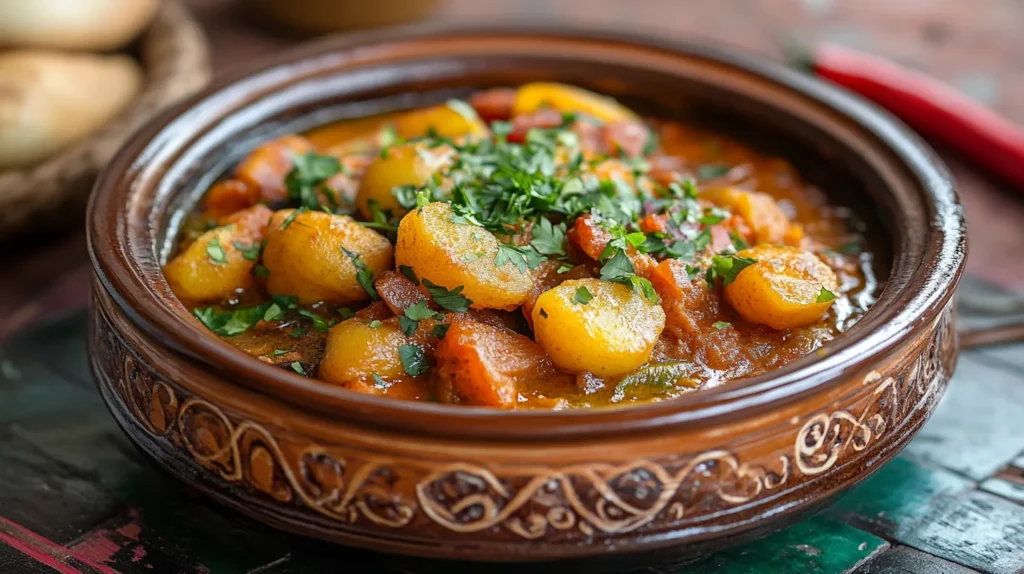
Cooking Moroccan food is like going on a flavor-filled journey, where sweet meets savory, and every spice has a story. One of the most beloved dishes from Morocco is the tagine, a slow-cooked stew packed with rich aromas and colorful ingredients. Whether you’re using chicken, lamb, or just vegetables, the magic always begins with the Moroccan tagine ingredients.
In this article, we’ll break down everything you need to know about making a traditional Moroccan tagine. From the essential spice mix and proteins to preserved lemons and olives, we’ll cover it all—using simple language and cooking tips anyone can follow. You’ll also learn about the cooking tools and even get answers to popular questions people often ask online. Let’s start by understanding what a tagine really is and why it’s more than just a pot of stew.
Table of Contents
Part 1: What is Moroccan Tagine?
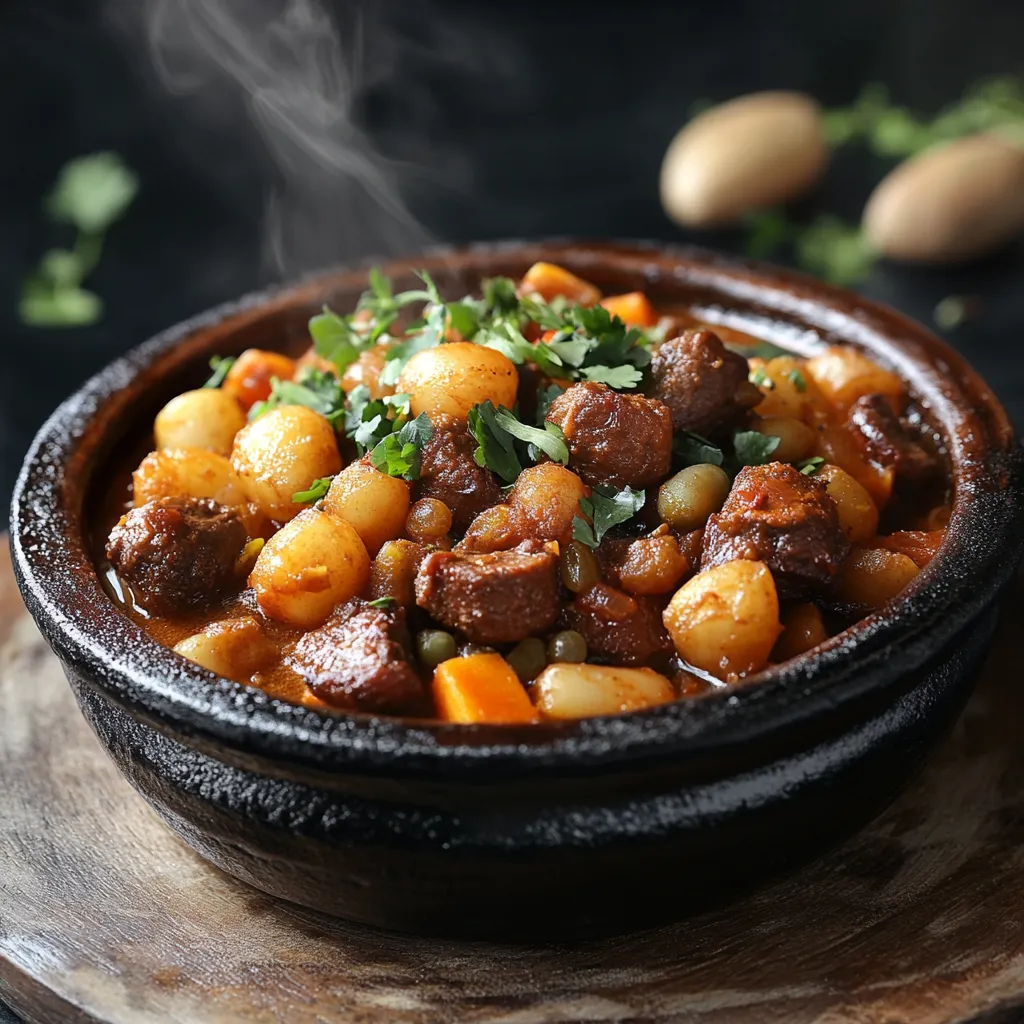
Where the dish comes from
The word tagine isn’t just about the food—it also refers to the clay pot it’s cooked in. This pot, with its round base and cone-shaped lid, helps steam stay trapped inside, creating a rich, slow-cooked flavor that’s hard to beat. But don’t worry, you don’t need a tagine pot to make this dish at home. A Dutch oven or heavy-bottomed pan works just fine.
Tagine comes from North African cuisine, especially Morocco, where cooking is deeply tied to family and tradition. People gather around the table to share this warm, hearty stew, often served with fluffy couscous or warm bread. While tagine recipes vary from one family to another, the core idea remains the same—slow-cooked goodness packed with spices, herbs, and vibrant vegetables or meat.
What makes a tagine different from other stews
You might be wondering—what’s so special about a tagine compared to other stews? Well, it’s all in the Moroccan tagine ingredients. The flavor base starts with onions, garlic, and a generous blend of spices like cumin, paprika, ginger, and cinnamon. These create that signature deep and layered taste.
But here’s where it gets really interesting—Moroccan tagines often mix sweet and savory elements. Imagine tender chicken simmered with carrots, green olives, and the bright zing of preserved lemons. Or maybe lamb cooked slowly with dried apricots and a drizzle of honey. That unique combo of ingredients and slow-cooking style gives tagine its unforgettable taste.
In the next section, we’ll dive into the most important part—what actually goes into a Moroccan tagine. Spoiler alert: you probably already have some of these ingredients in your kitchen!
Part 2: Traditional Moroccan Tagine Ingredients
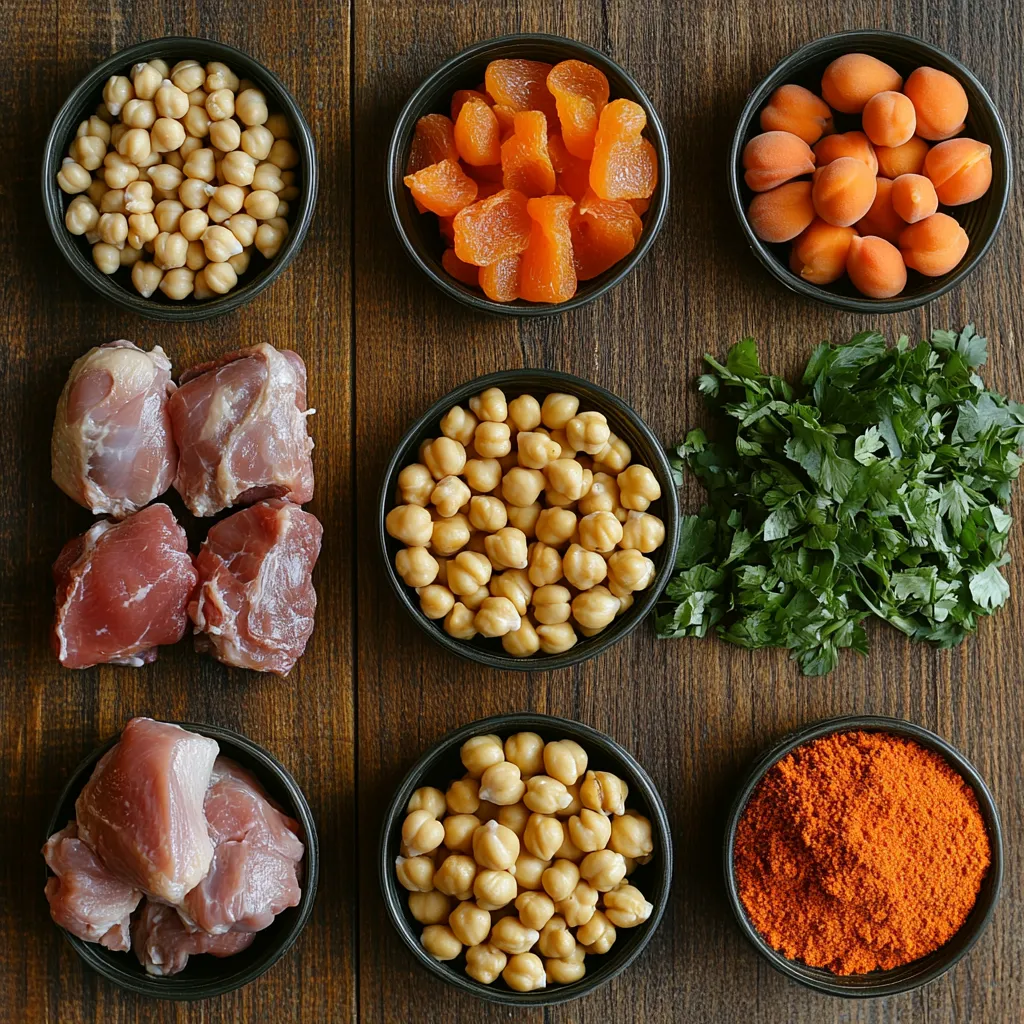
Core spices used in Moroccan tagine
When it comes to making an authentic tagine, spices are the real stars. They create that warm, layered flavor Moroccan food is known for. The most common Moroccan tagine ingredients include cumin, paprika, turmeric, ginger, cinnamon, and coriander. These spices aren’t just sprinkled in—they form a fragrant blend that brings depth to every bite.
You’ll often find paprika and cumin as the base, giving the dish its earthy, smoky tones. Ginger and turmeric add warmth, while cinnamon brings a subtle sweetness that pairs beautifully with dried fruits. You might also see cayenne pepper or black pepper for a gentle kick.
Some home cooks even mix their own tagine spice blend in advance and keep it in a jar for easy use. If you’re looking for a step-by-step guide, check out this simple Moroccan tagine recipe that highlights each spice beautifully.
Protein options: chicken, lamb, beef, and vegetarian
The protein you use can totally change the dish, but the heart of it stays the same—slow-cooked with all those bold Moroccan tagine ingredients. Chicken is a favorite because it soaks up flavors well and cooks fairly quickly. Bone-in thighs work best for richness and tenderness.
Lamb is a classic choice for holidays or special dinners. It pairs wonderfully with sweet ingredients like dates or apricots. If you’re a beef lover, try this beef tagine Moroccan version, which simmers beautifully and turns melt-in-your-mouth tender.
And hey, if you’re plant-based, don’t worry. A veggie tagine using zucchini, carrots, potatoes, and chickpeas can be just as satisfying. The spices do all the heavy lifting.
For more inspiration, take a look at this guide on how to make Moroccan tagine.
Part 3: Spice Mix for a Flavorful Tagine
Common Moroccan spices: cumin, paprika, turmeric, etc.
Spices are what transform simple ingredients into something unforgettable. In Moroccan tagine ingredients, the spice blend is key. This mix is often called ras el hanout, which loosely translates to “top of the shop”—meaning the best spices a seller has to offer.
A typical blend might include:
- 1 tsp ground cumin
- 1 tsp paprika
- ½ tsp ground ginger
- ¼ tsp cinnamon
- A pinch of cayenne pepper
- ½ tsp turmeric
These aren’t just thrown in randomly. They’re toasted gently or bloomed in hot oil to release full flavors. The result? A dish that’s earthy, spicy, and a little sweet all at once.
Use this mix to season your meat or veggies before cooking. You can also sprinkle a little extra on top at the end for an extra kick of aroma.
How to mix and store your own tagine spice blend
Making your own spice mix at home is easier than you think. Just combine your favorite ratios in a small bowl, and then transfer it to an airtight jar. Store it in a cool, dark place—away from heat or light—to keep it fresh for months.
Creating a go-to blend not only saves time, but it also helps you maintain consistency every time you cook. Just remember, the fresher your spices, the better your tagine will taste.
In the next section, we’ll look at the veggies that round out this dish—because tagine isn’t just about the meat and spices. Stay tuned!
Part 4: Vegetables in Moroccan Tagine
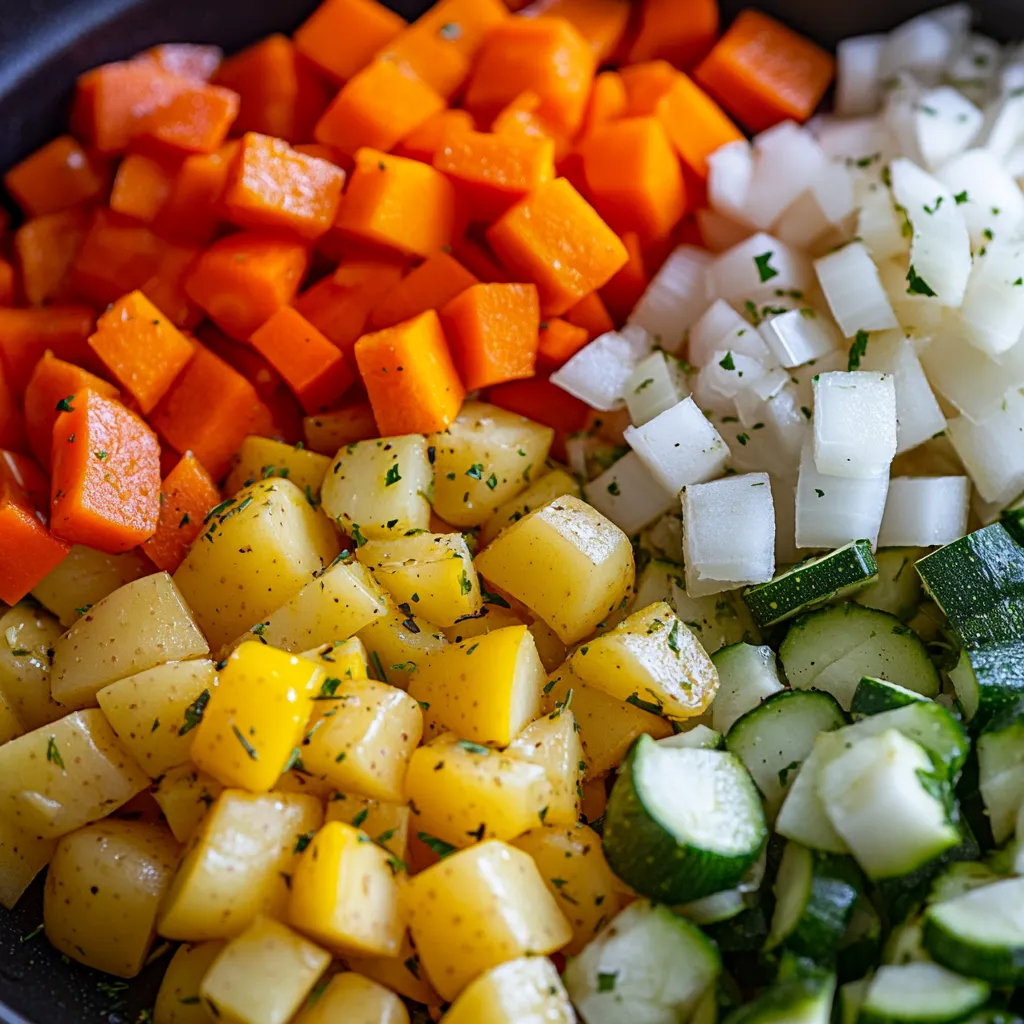
Best vegetables to use: carrots, potatoes, zucchini
Vegetables are a key part of Moroccan tagine ingredients, bringing color, texture, and earthy sweetness to every bite. The great thing about tagine is that it’s flexible—you can mix and match veggies depending on what you have on hand or what’s in season.
Some of the best vegetables to use include:
- Carrots: They add a gentle sweetness and hold up well during long cooking.
- Potatoes: Great for soaking up flavor, especially waxy ones like Yukon gold.
- Zucchini: Adds moisture and a tender bite to balance heartier veggies.
- Bell peppers and tomatoes are also common for a slightly tangy touch.
The trick is to cut the veggies into thicker chunks so they don’t turn to mush. Layer them under or around the meat so they soak up all the juices and spices.
Fresh vs dried produce: balancing texture and taste
You can absolutely combine fresh produce with dried ingredients like apricots or raisins. This balance creates that signature Moroccan flavor—savory, sweet, and rich all at once.
Dried fruits are often added during the last 10–15 minutes of cooking to avoid breaking down too much. Meanwhile, hearty veggies like carrots and potatoes go in early, letting them slowly absorb that spiced broth.
For more delicious recipe ideas, check out other dishes featured on Your Recipes .
Part 5: Sweet and Savory Ingredients Combo
Using dried fruits: apricots, raisins, dates
One thing that really sets Moroccan tagines apart from typical stews is the sweet-and-savory blend. It may sound unusual at first, but trust us—it works like magic. A well-balanced tagine often includes dried fruits, especially apricots, golden raisins, or even dates.
These ingredients are more than just sweet add-ons. They add depth and contrast, cutting through the savory notes from the meat and spices. When they cook slowly with the sauce, they plump up and soak in the flavors, becoming little pockets of juicy, spiced sweetness.
Including these dried fruits as part of your Moroccan tagine ingredients not only honors tradition but also elevates the whole dish.
When to use honey, almonds, or cinnamon
To enhance that sweet note, a drizzle of honey is sometimes added right at the end. It brings a silky finish that complements the spices. For added crunch, toasted almonds can be sprinkled on top just before serving.
Cinnamon, while already part of the spice mix, may be used again in small amounts for extra warmth and sweetness, especially in lamb tagines.
Don’t be afraid to play with these elements—they’re what give Moroccan tagine its rich, unforgettable taste.
Coming up next: preserved lemons and olives—two of the most iconic ingredients in this dish!
Part 6: The Role of Preserved Lemons and Olives
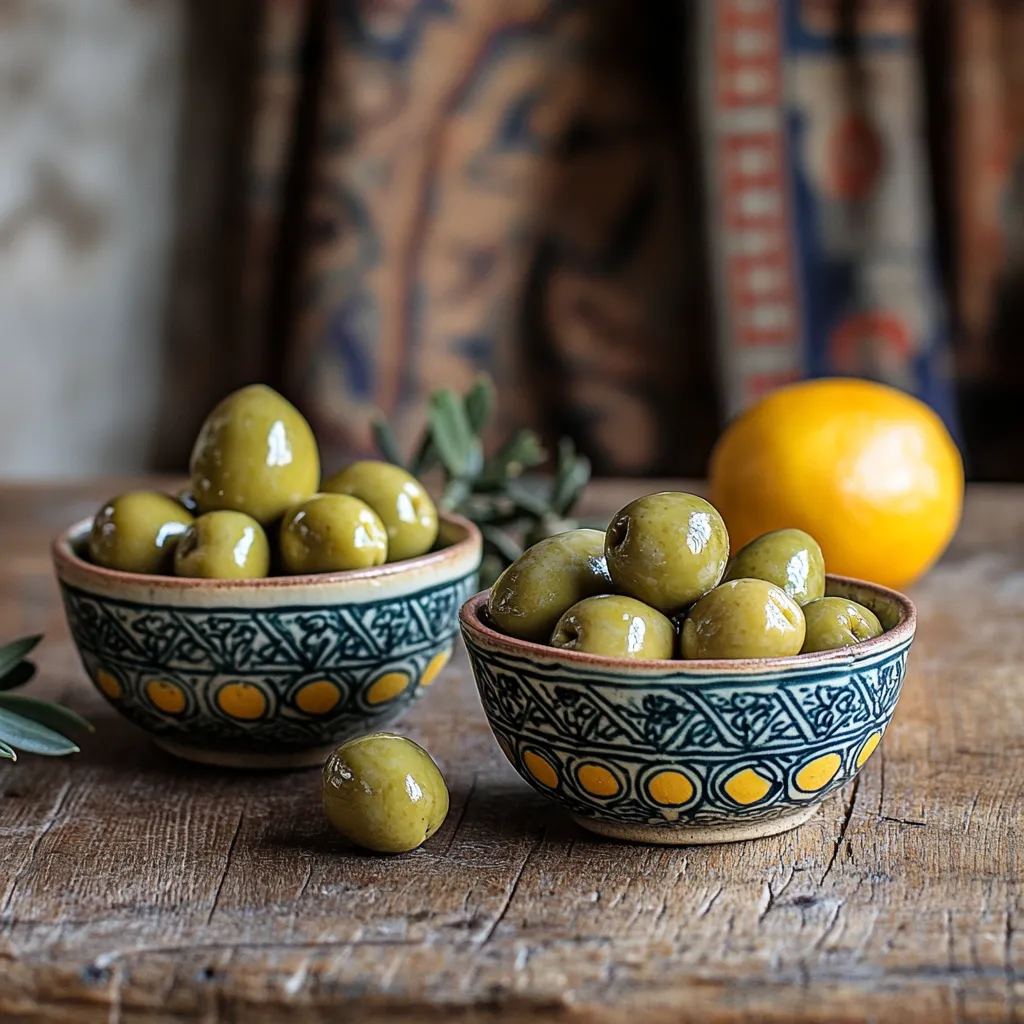
What are preserved lemons and how to use them
Among all Moroccan tagine ingredients, preserved lemons might just be the most unique. These lemons are cured in salt and lemon juice, then stored for weeks until their rinds become soft, briny, and bursting with flavor. They’re a staple in Moroccan kitchens—and for good reason.
Unlike fresh lemons, preserved ones offer more complexity. They’re less sour and more mellow, with a deep citrus punch that perfumes the entire dish. When using them in tagine, it’s usually the peel that’s chopped and stirred in near the end of cooking. Just a small amount can completely elevate the dish.
If you can’t find preserved lemons at your local store, don’t worry. You can substitute with fresh lemon zest and juice, though the flavor will be a bit brighter and sharper.
Which olives to choose: green, black, cracked olives
Olives bring saltiness and balance to the richness of the tagine. Green olives, especially the cracked or brined kind, are the most traditional. They hold their shape well and add just enough bite without overpowering the dish.
Black olives can work too, though they’re typically milder and oilier. Toss them in during the final 10 minutes so they warm through but don’t get mushy. Together with preserved lemon, they create that bold, tangy flavor Moroccan food is known for.
When combined, these two Moroccan tagine ingredients make the dish sing—adding contrast, character, and just the right amount of zing.
Part 7: Cooking Liquid and Flavor Boosters
Using broth or water: what works best
A tagine needs liquid to braise the meat and soften the vegetables. But not just any liquid will do. While you can use water in a pinch, using a rich broth—like chicken or vegetable stock—makes a huge difference. It adds depth, seasoning, and a rounder mouthfeel to your tagine.
When building your base of Moroccan tagine ingredients, start with a flavorful broth. Pour it in after toasting your spices and deglazing the pot, scraping up those delicious browned bits for added flavor. If your tagine gets too thick as it cooks, you can always add a splash more.
Lemon juice, tomato paste, and harissa
To give your tagine an extra boost, a few spoonfuls of tomato paste can go a long way. It thickens the sauce and adds a subtle sweetness. Lemon juice, on the other hand, keeps things bright and cuts through the richness of meat and olive oil.
And let’s not forget harissa—a North African chili paste that brings smoky heat and complexity. Use it sparingly if you’re heat-sensitive, or stir it in at the end for a warming finish.
These simple but powerful Moroccan tagine ingredients round out the dish, tying together all the flavors in every spoonful.
Part 8: Optional Garnishes and Sides
Herbs: cilantro, parsley, mint
Once your tagine is done simmering, it’s time to finish with fresh herbs. Don’t skip this step—it brightens the whole dish. Cilantro is most traditional and adds a citrusy, fresh pop that complements the deep spices. Flat-leaf parsley works great too, especially when chopped and sprinkled over just before serving.
Sometimes, a touch of mint can offer a refreshing twist, especially in vegetable or lamb tagines. These garnishes might be simple, but they round out the layers of flavor found in Moroccan tagine ingredients.
Best sides to serve: couscous, bread, or rice
When it comes to serving your tagine, you’ve got a few tasty options. The most classic side is steamed couscous. It’s light, fluffy, and perfect for soaking up all that rich sauce.
But don’t stop there—crusty Moroccan bread (khobz) is great for scooping, and even plain white rice works well if that’s what you’ve got. Whatever you choose, just make sure it complements those bold Moroccan tagine ingredients and doesn’t overpower them.
Part 9: Tagine Pots vs. Dutch Ovens
What is a tagine pot and how it works
The traditional tagine pot is as iconic as the dish itself. Made from clay or ceramic, it features a shallow base and a cone-shaped lid. This shape helps trap steam, allowing the food to slow-cook in its own juices. That’s how the flavors develop so deeply, even with simple Moroccan tagine ingredients.
While using a tagine pot adds to the authenticity, it’s not a must. These pots require low heat and a bit more care, especially if you’re cooking on the stove.
Alternative cookware if you don’t have a tagine
No tagine pot? No problem. You can easily use a Dutch oven, heavy skillet with a lid, or even a braising pan. Just be sure to keep the lid tight and cook on low heat. The goal is to mimic the gentle, slow simmer you’d get with a traditional tagine.
With the right ingredients and patience, you’ll get delicious results—no matter the pot.
Part 10: Tips for First-Time Tagine Makers
Common mistakes to avoid
If you’re just starting out, making tagine might feel a little intimidating—but it doesn’t have to be. First, avoid using too much liquid. Since a tagine pot traps steam, you won’t need as much broth as you would for a regular stew. Adding too much can make the dish watery.
Another mistake? Rushing the process. Tagine is all about low and slow. Quick cooking won’t give your ingredients enough time to soak in those rich flavors. And don’t skip browning the meat—it creates deep flavor right from the start.
Cooking low and slow for best results
The real secret to a great tagine is patience. Cook over low heat and resist lifting the lid too often. This way, your Moroccan tagine ingredients slowly release and absorb flavor, building that signature taste.
Also, layering matters! Start with onions, add meat, then vegetables. It helps cook everything evenly and keeps the dish juicy and tender.
FAQs About Moroccan Tagine Ingredients
What ingredients go in a Moroccan tagine?
A traditional Moroccan tagine includes spices like cumin, paprika, ginger, and cinnamon, along with protein (chicken, lamb, or chickpeas), vegetables like carrots and potatoes, dried fruits, preserved lemons, and olives. These Moroccan tagine ingredients create a balance of savory, sweet, and tangy flavors.
What spices are most used in Moroccan cooking?
Moroccan cuisine is spice-rich. Common spices include turmeric, coriander, cinnamon, paprika, ginger, and cumin. These are often blended into spice mixes like ras el hanout or used individually in tagines and other Moroccan dishes.
Can I make tagine without preserved lemons?
Yes, you can! While preserved lemons add a unique tangy flavor, you can substitute with fresh lemon zest and a splash of lemon juice. It won’t be exactly the same, but it’ll still be delicious and vibrant.
What kind of meat is best for Moroccan tagine?
Chicken thighs, lamb shoulder, and beef chuck are all great options. They cook well over low heat and absorb the spices beautifully. Vegetarians can go with chickpeas or lentils as hearty alternatives.



